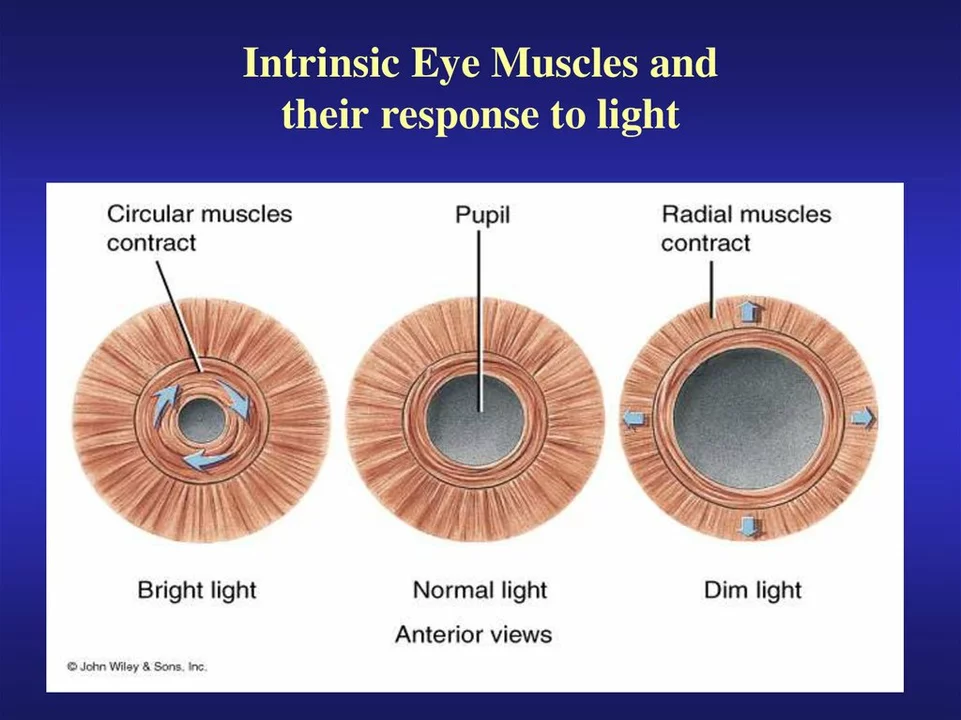Pupil Constriction (Miosis): What It Means and When to Worry
Noticed one or both pupils getting very small? That’s called miosis, or pupil constriction. Sometimes it’s harmless — like when you step into bright sunlight or use certain eye drops. Other times it points to something that needs quick attention, like opioid exposure or a nerve problem. This page helps you tell the difference and gives clear next steps.
Common causes of pupil constriction
Here are the usual reasons you might see small pupils:
- Bright light or focusing on near objects: Your pupils get smaller to protect the eye and sharpen near vision. That’s normal and reversible.
- Medications and eye drops: Drugs that stimulate the eye’s cholinergic system (for example, pilocarpine used for glaucoma) or some prescription medicines can cause miosis.
- Opioids: Heroin, prescription morphine, oxycodone and similar drugs commonly cause pinpoint pupils. If this happens with drowsiness or trouble breathing, treat it as an emergency.
- Horner’s syndrome: A nerve pathway problem that causes one small pupil plus drooping eyelid and sometimes reduced sweating on that side. It can signal a serious issue like a carotid artery problem.
- Organophosphate or pesticide exposure: Certain poisons from insecticides cause strong miosis and extra symptoms like sweating, nausea and muscle twitching.
How to check and what to do right away
Start simple. Use a flashlight or move from dark to bright light and watch the pupils. Are they equal? Do they react to light and to looking at something close? If both pupils respond normally and you recently used strong light, eye drops, or a known medication, you can likely monitor at home.
Take these steps if you notice miosis:
- Look for other signs: drooping eyelid, blurred vision, headache, weakness, nausea, drooling, breathing problems. Any of these ups the urgency.
- Check recent meds and exposures: note new prescriptions, eye drops, possible contact with insecticides, or recent use of opioids.
- If you suspect opioid exposure and the person is hard to wake or breathing slowly, call emergency services and use naloxone if available.
- A one-sided small pupil with eyelid droop needs prompt medical evaluation — it can mean Horner’s syndrome or a vascular problem.
- Avoid driving or operating heavy machinery until a provider clears you.
When in doubt, get checked. A simple exam by a doctor or eye specialist can sort out harmless causes from those needing quick treatment. Bring a list of medicines, a photo of the pupils if they change later, and any notes about exposure or symptoms — that helps speed diagnosis.
If you want, note your symptoms and when they started. That makes your visit more useful and can point the clinician to the right tests. Small pupils are often nothing to panic about, but a few signs — sudden headache, weakness, trouble breathing, or one-sided eyelid droop — mean act fast.
Pupil Constriction: What Causes Myosis?
As a blogger, I recently explored the topic of pupil constriction, or myosis, and discovered some interesting facts. Myosis occurs when the muscles in our iris contract, causing the pupil to become smaller. There are several factors that can lead to this reaction, such as exposure to bright light, certain medications, and even the natural aging process. Additionally, some underlying health conditions, like brain injuries or eye trauma, can also cause pupil constriction. It's essential to be aware of these factors and consult a healthcare professional if you experience any sudden or unexplained changes in your pupils.

